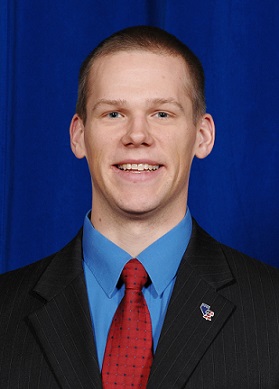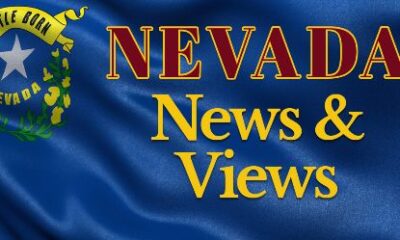Pledge signers shape which policy proposals actually get presented
 (Victor Joecks, NPRI) – “Shaping the path,” a term used by brothers Chip and Dan Heath in their book Switch: How to change things when change is hard, describes how environmental factors change people’s behavior — often without conscious recognition.
(Victor Joecks, NPRI) – “Shaping the path,” a term used by brothers Chip and Dan Heath in their book Switch: How to change things when change is hard, describes how environmental factors change people’s behavior — often without conscious recognition.
The Heaths describe an experiment in which moviegoers were given a bowl of free popcorn. One group was given a medium bucket and the second was given a large bucket, but both tubs contained more popcorn than one person could possibly eat.
This popcorn, however, was purposely disgusting. It had been popped five days earlier and was so stale it squeaked when moviegoers ate it. One taster compared it to Styrofoam peanuts.
What the testers wanted to determine was this: “Would somebody with a larger inexhaustible supply of popcorn eat more than someone with a smaller inexhaustible supply?”
The answer was unequivocally yes. “People eat more when you give them a bigger container. Period,” found Brian Wansink, author of the study.
This is similar to how liberals “shape the path” to grow government. They define the terms of the debate, including what is considered compromise, so that government is always growing.
Liberals define compromise like this: I want a $1 billion tax increase. You don’t want a tax increase. Let’s compromise by raising taxes “just” $500 million.
This is why liberals despise the Taxpayer Protection Pledge. They don’t like lawmakers who refuse to play the game by the rules they try and create.
Here’s how Taxpayer Protection Pledge signers define compromise: You want tax increases. I want to shrink government. Let’s compromise by keeping government the size it is now.
While some conservatives insist that they don’t need to sign the tax pledge to vote against tax increases, there are two reasons all conservatives should sign it. First, it increases a lawmaker’s chance of opposing tax increases. In the Nevada Assembly Republican caucus, 90 percent of pledge signers voted against the largest tax increase in state history, 80 percent of non-pledge signers voted for those hikes.
Second, signing the pledge shapes the path by defining — or redefining — the political environment.
In Nevada, it takes a two-thirds vote in each house to raise taxes, which means 15 Assembly members or eight Senators can kill any tax increase. So if, after election night in 2014, 17 Assembly members had been elected who had signed the Taxpayer Protection Pledge, instead of 10, it would have changed Sandoval’s political calculations about what was possible, sometimes referred to as the Overton Window.
Instead of a $7.3 billion budget proposal, Sandoval may have proposed a $7 billion budget and waited on his gross receipts tax until 2017. Electing enough Taxpayer Protection Pledge signers — shaping the path of what is politically possible — can change policy proposals before any lawmaker casts a vote.
Liberals try to shape the path by insisting that it’s important to be part of the debate — and then defining the terms of the debate
Sandoval dominated the Legislative discussion by making the debate, “How are you going to fund my wasteful education spending proposals?”
For Taxpayer Protection Pledge signers that’s the equivalent of asking, “When did you stop beating your wife?” Their refusal to enter that debate showed wisdom, not an unwillingness to discuss real questions like, “Are we spending the money we currently have effectively?” and “How big should government be?”
By being so eager to “have a seat at the table,” what too many lawmakers failed to consider was, “What are we debating and compromising over?”
Both NPRI and elected officials, including Controller Ron Knecht and Assemblyman Jim Wheeler, presented line-by-line alternative budgets, but Sandoval and Republican leaders weren’t interested in compromise and discussions on how to spend money more effectively.
And without enough Taxpayer Protection Pledge signers and clear vocal opponents of tax increases to change the question being debated, there was no reason for Sandoval not to keep twisting arms and knocking heads about the question he wanted discussed.
For all the talk about the need to compromise, Sandoval didn’t. He passed a gross receipts tax — which legislative insiders told NPRI was a higher priority to him than his education proposals — and he got his budget through, almost to the penny. After the session, liberal pundit Jon Ralston visited Sandoval’s “war room” and saw a note on the white board that the Legislature had changed Sandoval’s $7.3 billion budget proposal by .00175% or about $130,000.
Sandoval didn’t need to compromise. By shaping the path around the question he wanted discussed, he got enough Republicans in the Senate and Assembly to capitulate.
Taxpayers should be grateful to every elected official who voted against tax increases, including Assemblymen Chris Edwards, John Ellison and Ira Hanson and Senators Pete Goicoechea and James Settelmeyer. In a building where the path is shaped to expand government and lawmakers are surrounded by lobbyists whose job it is to gain government-granted privileges, the easiest thing is to give into the pressure and vote for higher taxes. Voting against tax increases takes tremendous courage.
But taxpayers should be especially grateful to Taxpayer Protection Pledge signers who opposed the tax increase, including Assembly members Jill Dickman, Vicki Dooling, Michele Fiore, Brent Jones, John Moore, Victoria Seaman, Shelly Shelton, Robin Titus, and Jim Wheeler and Sen. Don Gustavson.
By signing the Taxpayer Protection Pledge and honoring their word to their constituents, those lawmakers intelligently sought to shape the path — by changing the very terms of the debate.
Victor Joecks is executive vice president of the Nevada Policy Research Institute, a non-profit, non-partisan think tank that produces and shares ideas and information that empowers people. For more information, please visit www.NPRI.org.
The column was originally published at NPRI.




Facebook
Twitter
Pinterest
RSS